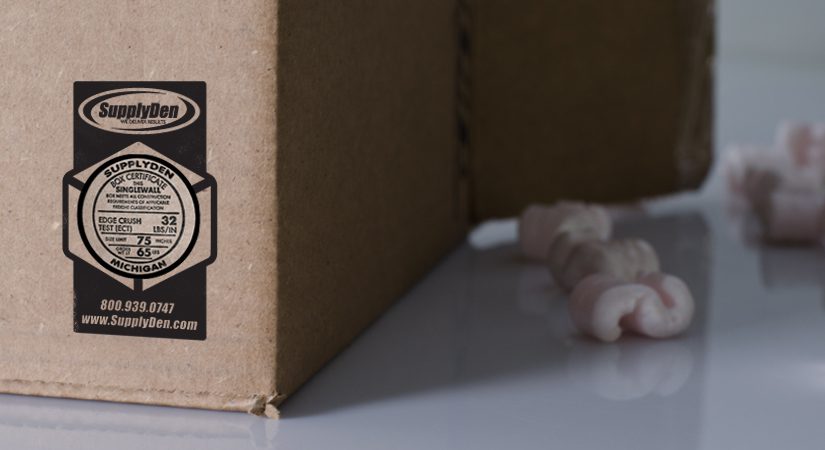The world is a much smaller place than it once was. Technological advancements allow us to have face-to-face conversations with people on the other side of the world with the push of a button. Seemingly unlimited amounts of information is available on most of our electronic devices, including our phones and watches. For all of the ways to stay connected to the world that have been streamlined and made easier, the simple act of sending a package has not really changed. Sure, the technology used to schedule and track shipments has made the process slightly more reliable, but the core activity of putting something in a box and sending it to someone has stayed the same. The fact remains that in the face of expanded technologies, a large percentage of packages sent today are still being sent to the wrong recipient or arriving broken or incomplete. There still isn’t a widely available machine that actively selects the correct packaging options for a product, and that can secure the items in the package or that can assure that the package arrives where it is intended. These things are still on us. Below are some tips and methods to help you do what technology still cannot.
Since there are a vast number of items of different shapes and sizes that are often shipped, in this example we will discuss shipping items that can be conventionally packed in a corrugated carton, or as most people still call them, cardboard boxes. The first step is to measure your items to be shipped and to select a carton that is slightly larger than the object’s largest dimension. Although the key is to assure that there is little to no movement in the packaging, sufficient room needs to be left for box fill and inner packaging options. Once the carton size is determined, the next step is to determine the construction of the box in relation to what is being shipped. The larger, heavier and more irregularly shaped an item is, the sturdier the corrugated needs to be to ensure safe delivery. This is usually managed by selecting the correct ECT container to accommodate an item. ECT, or Edge Crush Test, is a value that is used to assure that the corrugated carton is strong enough to protect the package. This value is determined through laboratory testing, and measures the cross-direction crushing of a corrugated sample to calculate its’ crush resistance. The three most commonly used cartons fall into a good, better and best scenario. Standard single-wall containers are average cartons with an ECT rating of 32. For slightly heavier items, a heavy duty single-wall is usually enough, which has an ECT of 44. Much heavier or abnormally shaped items often require a double-wall approach which typically has an ECT rating of 48. It is important to note that using a sturdier carton than actually needed is unnecessary, and can cost two to three times more than is needed. To ensure cost-effectiveness, avoid cartons that are much bigger or stronger than is warranted to protect your items.
Once you’ve found the perfect carton, some consideration needs to be taken on how to best secure the contents. Common box fill materials include foam packing peanuts, plastic bubble wrap and kraft packing paper. Wrapping the objects in paper or bubble wrap is usually the first step in order to make sure that the original packing or the objects themselves are not scratched or marred. The next step is to secure the inner package to minimize the items’ movement in transit. A combination of the three previously mentioned fill materials is usually the most effective approach. Completely surrounding the items to insulate them from impact damage is the main concern. Before sealing the carton, it is wise to gently shake your package to limit, or ideally eliminate any movement inside the box. If shifting is noticed, increase the box fill items until the objects are stationary. While using labels such as “FRAGILE” can be useful, they certainly do not replace the proper precautions. Once the package is secure, it’s time to seal the package.
Tape is still the most cost-effective method of securely sealing a package. For most packages, brown or clear carton sealing tape, either two or three inches wide, is the most secure choice. Avoid using other common tapes such as duct tape, which has a texture that commonly catches on outside item and often gets removed when coming in contact with other packages. Transparent tape, often used in gift wrapping, should also be avoided for its’ lack of strength. The most efficient method of taping a carton is referred to as the “H” method. This simply involves taping the open seams; the main seam where the lids meet when closed; and the seams where the top flaps touch the sides of the carton. Taping these three seams makes an “H” shape as indicated in the name, and is the best way to prevent unintentional opening.
Your package is now in the appropriate sized and strength carton and is securely sealed. We’re ready to prepare for our end goal: actually getting the package to the correct recipient. When re-using a carton that has been shipped previously, first make sure the box is still structurally sound. If the carton is suitable for shipping, you must then remove all previous labels and cover up any barcodes from previous carriers. This will prevent your packages from being sent to the wrong location. By using a thermal printer and thermal transfer labels you can create clear and concise directions on how this package is to be transported. It is also wise to include a packing list in a clear adhesive packing list envelope with your return address fully legible to assure that it returns to you should complications arise.
Now you’re ready to share in the grand tradition of sending a package. The above mentioned methods will help you along until technology finds a better way.

